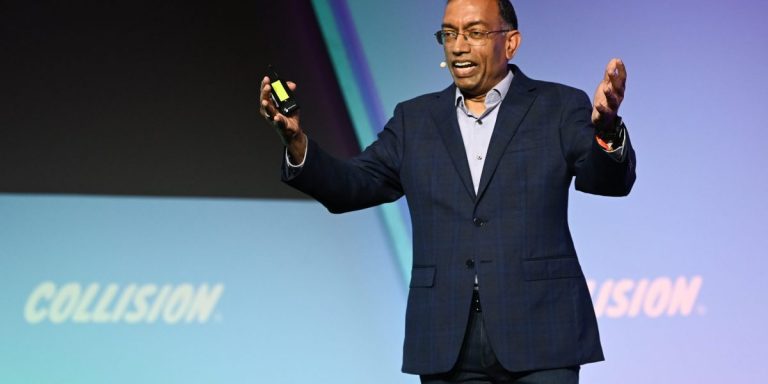Walmart’s chief technologist, Suresh Kumar, argued earlier this year that the 62-year-old retailer is in the midst of transforming the industry through a framework it calls “adaptive retail.”
“All the great things about e-commerce — skipping lines, easy search, personalized product recommendations — should be available in stores too,” he writes, “and all the great things about brick-and-mortar stores — try-ons, customer service, instant purchase — should be available from the comfort of your own home.”
Kumar, who spent a combined 20 years working at Amazon, Google and Microsoft, and his fellow leaders at Walmart now believe they have the research to back up their vision.
Walmart recently commissioned a study by Morning Consult about the shopping habits and preferences of more than 2,200 Americans, which found strong interest in shopping with the help of social media apps and virtual assistants, as well as in-store shopping experiences that are made more convenient by technology like mobile checkout and augmented reality.
The most notable findings are:
Social media’s long-touted impact on shopping habits may already be evident: 55% of Gen Z respondents said they had made a purchase while browsing social media in the six months prior to the survey.
Additionally, just as many Gen Z respondents begin their product searches on social media as they do on search engines or a retailer’s own app or website.
More than half of shoppers say they want customized or personalized product recommendations for their body type and the space they live in. Half of Gen Z shoppers and their parents would prefer a virtual shopping assistant at all times. Nearly 8 in 10 respondents have shopped online while focusing on another task in the six months prior to the survey. Half of respondents are interested in phone-based self-checkout in stores, and 60% of parents and more than half of Gen Z respondents would prefer to buy products in-store and have them delivered to their home.
Not surprisingly, the questions that elicit these answers are based in part on new technologies and services that Walmart has tested and introduced in recent years. For example, earlier this year Walmart began testing and promoting an AI-powered virtual assistant that can guide customers through purchases when they’re planning a party or buying gifts but aren’t sure what to buy. The company is also investing in technology that allows online shoppers to virtually try on products from home, as well as a service that delivers products directly to customers’ homes, or even refrigerators.
“The home is just one node in our supply chain,” Kumar, Walmart’s chief technology officer, told Fortune magazine in a recent interview.
On the social media front, Walmart is employing a network of influencers to help promote its products to shoppers as close as possible to the moment they discover or get inspired on external video and photo-sharing apps. Perhaps not surprisingly, one platform Walmart is investing heavily in is TikTok.
“Shopping started in stores and then moved online,” Kumar says, “and now it’s becoming everything.”
He added that a key element behind this overall transformation is machine learning technology and other forms of artificial intelligence working behind the scenes “coordinating every single movement of goods from manufacturing to people’s homes” to ensure customers have the right product whether they want it shipped from a warehouse, delivered from a store, available on a store shelf or picked up curbside.
“That’s really important,” he said of the systems behind the scenes. “And it also has to do with the immediacy, speed, and instant gratification that you mentioned in the report, especially for Gen Z, which includes my daughters. Those are incredibly important.”
Walmart has long chased Amazon to give online shoppers as many choices as possible, but it recognizes that many shoppers, including younger generations, want options that are sometimes tailored to them. Kumar argued that Walmart has the data to know its customers better than any other retailer because of its outsized sales presence both in stores and online, and because it offers a range of services from pharmacies to auto centers.
“When you combine that with the power of ML and AI and all the custom models you can build on top of it, it’s a game changer,” he said.
The trick, of course, is turning reams of data into recommendations that are timely and relevant but not creepy.
“When we look back five years from now, or at most 10 years from now, we will see that the way people find and discover products, how they express and transact their identities, and how they acquire goods and services have fundamentally changed,” Kumar concluded.


